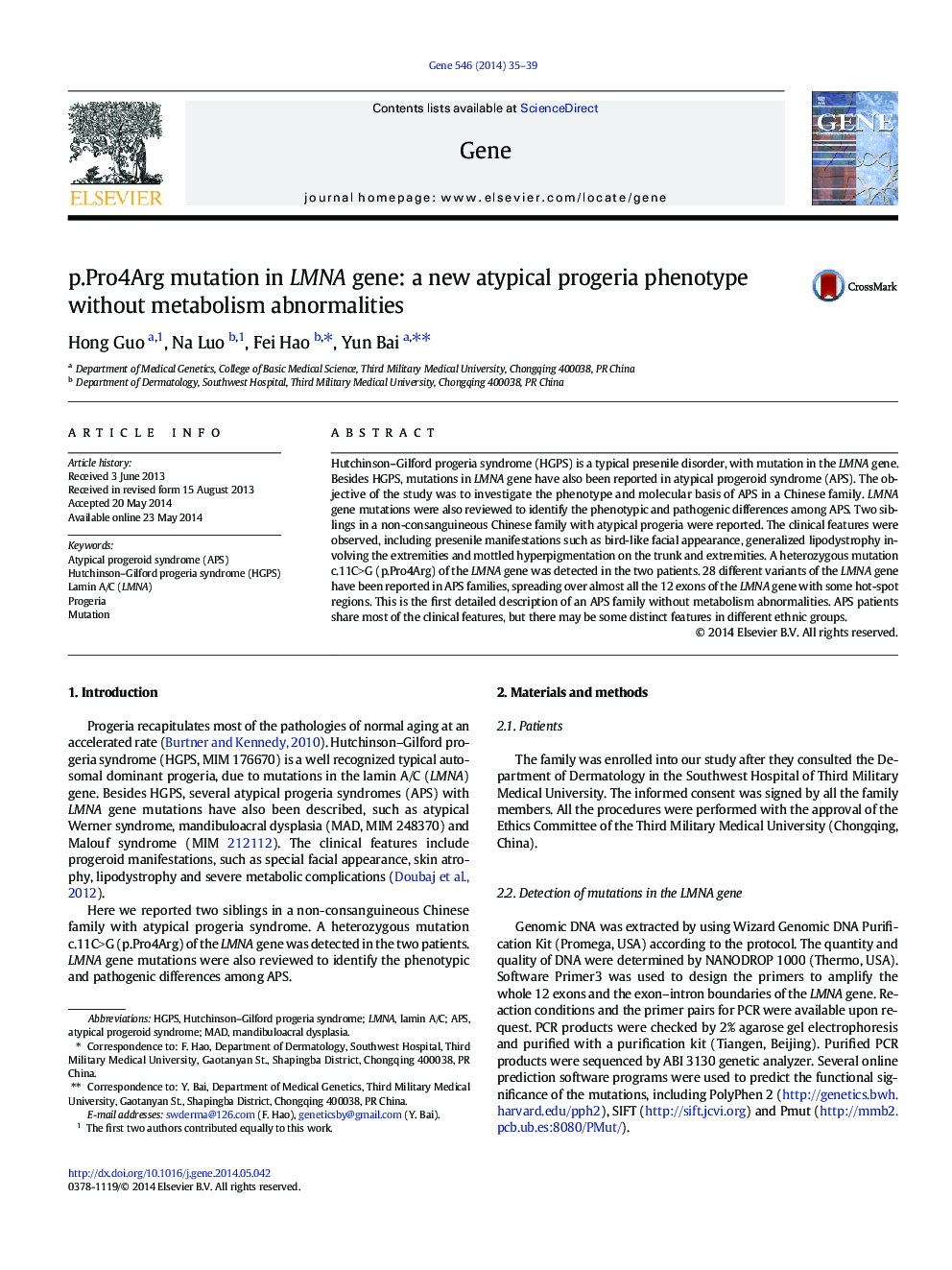| Article ID | Journal | Published Year | Pages | File Type |
|---|---|---|---|---|
| 2816309 | Gene | 2014 | 5 Pages |
•A new atypical progeria phenotype is described.•The phenotype includes presenile manifestations without metabolism abnormalities.•The pathogenic variant is p.Pro4Arg in LMNA gene.
Hutchinson–Gilford progeria syndrome (HGPS) is a typical presenile disorder, with mutation in the LMNA gene. Besides HGPS, mutations in LMNA gene have also been reported in atypical progeroid syndrome (APS). The objective of the study was to investigate the phenotype and molecular basis of APS in a Chinese family. LMNA gene mutations were also reviewed to identify the phenotypic and pathogenic differences among APS. Two siblings in a non-consanguineous Chinese family with atypical progeria were reported. The clinical features were observed, including presenile manifestations such as bird-like facial appearance, generalized lipodystrophy involving the extremities and mottled hyperpigmentation on the trunk and extremities. A heterozygous mutation c.11C>G (p.Pro4Arg) of the LMNA gene was detected in the two patients. 28 different variants of the LMNA gene have been reported in APS families, spreading over almost all the 12 exons of the LMNA gene with some hot-spot regions. This is the first detailed description of an APS family without metabolism abnormalities. APS patients share most of the clinical features, but there may be some distinct features in different ethnic groups.
